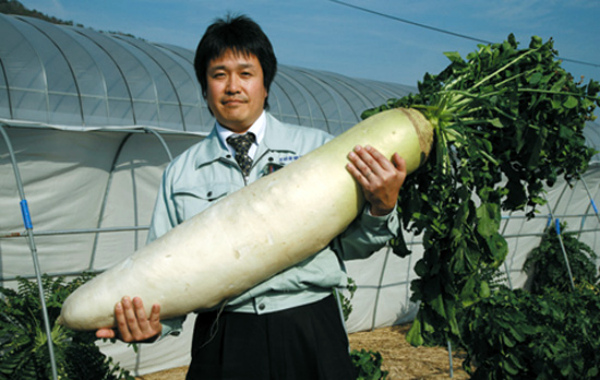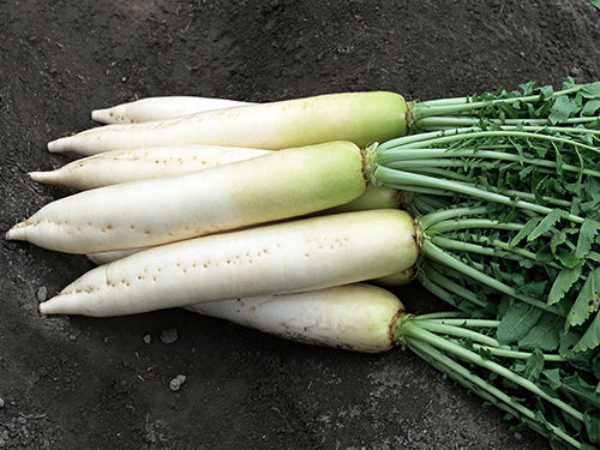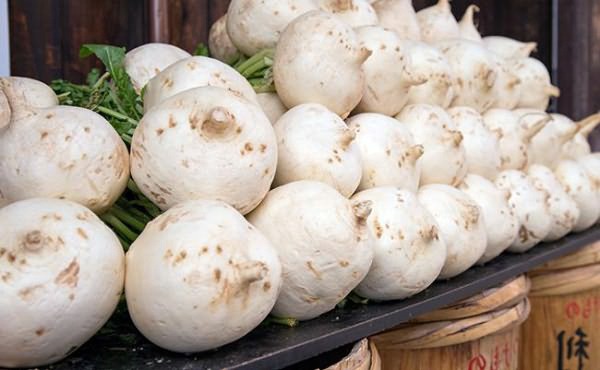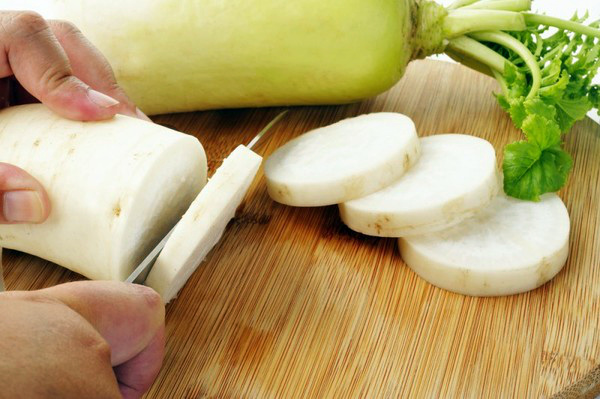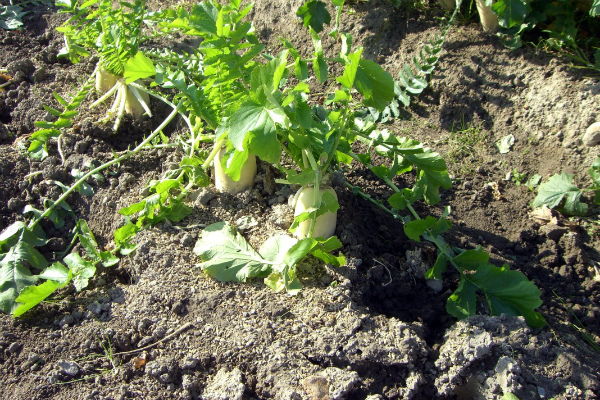Daikon and radish - one species?
Content
Features and history of daikon
Since the vegetable has some resemblance to the radish we are used to, many ask the question: “Are radishes and daikons the same species?”. Based on biological characteristics, we can say that daikon is not a radish, but rather a radish, or rather a subspecies of it. Daikon, like radish, belongs to plants of the Cabbage family, but unlike it, it has a milder taste and moderate aroma, since it practically does not contain mustard oil.
Daikon (Japanese or Chinese radish) is a root vegetable crop, which is a subspecies of sowing radish. According to some reports, this radish was bred by Japanese breeders from the Asian varietal radish growing in China. "Daikon" in translation from Japanese means "big root", but in the literature you can find other names of the culture: "white radish", "sweet radish".
The roots of this culture are really impressive in size. Some species grow 60 cm or more in length, and their weight ranges from 600 g to several kilograms. The most common and most widespread in Japan, the "Aokubi" species is similar in shape to carrots, is 25–35 cm long and 6–10 cm wide in diameter. But the type of "Sakurajima" is distinguished by giant roots that look like a radish outwardly, but inside are bright pink. Now in Europe many types of daikon are grown: "Caesar", "Dragon", "Emperor", "Japanese Long", "Minovashi" and others.
As already mentioned, Japanese radish contains practically no mustard essential oils, due to which it is softer and tastier than regular radish. The root vegetable has an illuminating, crispy pulp, the taste of which changes from top to bottom: the radish is sweeter on top, and it becomes sharper closer to the root. Some species with small roots have a particularly mild and sweet taste.
Daikon can be used in different forms. In his homeland, in the countries of Asia, salads are most often prepared from the product, as well as pickled, boiled, and salted. Interestingly, not only the radish itself is suitable for food, but also the tops - young greens are also added to salads.
Radish of this variety is divided into types: winter and summer. Each species has a different growing season. Summer (early) radish ripens in 50-60 days, it is sown in spring, is eaten fresh and is not intended for storage. Winter radishes have a longer growing season (up to 70 days). It is planted in the second half of summer and harvested in late autumn. This radish has excellent marketability and can be stored for several months.
Beneficial features
In oriental cuisine, daikon is an essential ingredient in most dishes. It is included in salads, soups, served as a side dish for fish, meat, seafood. In Japan, this radish is traditionally served with sashimi, in China and Korea it is salted, pickled, harvested for future use and consumed all year round.Such popularity of the product is caused not only by its excellent taste, but also by its low calorie content - 21 kcal per 100 g.
Radish of this variety is allowed to be consumed by people of all ages, moreover, in case of health problems, it can become a real panacea for disease. Overseas radish has a rich vitamin and chemical composition. It contains a lot of vitamins C, A, E, B vitamins, as well as iron, copper, zinc, calcium, magnesium, sodium, potassium, sulfur. But the special value of the product is made by phytoncides and glycosides, which endow radishes with high antiseptic properties.
With regular use, Japanese radish has a beneficial as well as a healing effect on the body:
- improves the filtering ability of the liver;
- promotes the removal of sand from the kidneys;
- restores heart rate in case of arrhythmias;
- soothes, improves sleep;
- improves the digestive tract;
- inhibits the growth of microbes and bacteria;
- relieves alcohol intoxication;
- with prolonged use removes toxins, neutralizes free radicals;
- root vegetable juice has a mild diuretic and laxative effect;
- Chopped pulp is an effective remedy for acne, acne and other skin problems.
This type of radish is recommended to be consumed by the elderly, who, due to heart pathologies, cannot consume radish or horseradish. For them, Japanese radish is not just a useful product, but also a natural remedy.
Growing features
In general, daikon is unpretentious to growing conditions. But since the Far East is the homeland of culture, some of its species, when cultivated in European latitudes, have their own characteristics. Like any type of radish, the vegetable does not need a long day of light. Moreover, when the light is longer than 13 hours, the plants begin to release arrows and flower stalks. To prevent this from happening, the seeds should be sown at a time when the daylight hours are still short: summer species - in early spring, winter - in the second half of summer.
The temperature regime is no less important for the daikon. Like ordinary radishes, it tolerates cold well and forms roots better in cool (+ 15–20 ° C) soil. However, unlike her, this type of radish does not need frequent watering and maintaining constant humidity. Plants should be watered as needed, but weeds should be removed, the aisles should be loosened regularly.
Overseas radish prefers light, preferably sandy loam soil with little peat content. The technology of planting a crop is quite simple: on a previously dug and fertilized area, furrows are made with a depth of 2-4 cm, 2 seeds are planted in them at a distance of 20-30 cm. The distance between rows should be at least 50 cm, since root crops can have a very impressive the size.
Seedlings appear in 5-7 days. When the sprouts have two leaves, one sprout should be removed from the hole, leaving the strongest one. During the germination period, it is necessary to ensure that the plants are not attacked by a cruciferous flea.
With proper care, the crop yield can reach 10 kg per 1 meter of area.
Video "About the benefits of daikon"
This excerpt from the program "Life is great!" will tell you about the benefits of Japanese radish and introduce you to the recipe for a delicious and healthy salad.

